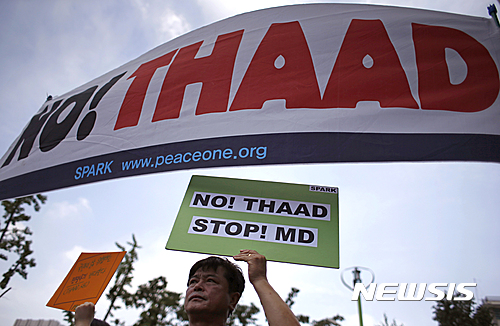
Korea on knife edge
Donald Kirk – The Korea Times
U.S.-China relations are at their worst in years, and North and South Korean are not getting along either. In fact, relations between those two are at such a low ebb that two-way trade, once about several hundred million dollars a year, has almost ceased.
Curiously, however, North Korean coal does make its way into South Korea, which relies on coal for 40 percent of its electrical power. Russia imports coal across the 11-mile Russian-North Korean border formed by the Tumen River as it flows into the sea and then ships the black stuff southward. Just think how much simpler it would be if North Korea could ship coal directly to South Korea by train or by sea down the east or west coast.
Sensible though North-South trade might seem, it’s not going to pick up in the foreseeable future. The shutdown by South Korea of the industrial zone at Gaeseong dashed hopes for South Korean capitalism in the North. Until then 50,000 workers were turning out light industrial products ranging from cosmetics to golf bags for more than 100 small- and medium-sized South Korean enterprises.
North Korea may miss the $100 million or so a year it was making from Kaesong, but construction of skyscrapers in Pyongyang gives the impression the regime of Kim Jong-un is doing quite well. Visitors sense new confidence in Pyongyang ― fueled, they say, by the knowledge that “we’ve got the bomb, and no one dares attack us.”
The scenes of progress in Pyongyang contrast with signs of poverty everywhere else, but the most stunning paradox is that North Korea produces ever bigger, better missiles while preparing for a fifth nuclear test. How do they get the funds in their pursuit of a dream of unbridled military power that costs multimillions every year?
The answer is China. The Chinese may not like North Korea making strides as a nuclear power, but they’re aiding and abetting the cause by violating UN sanctions, importing mountains of coal and other mineral wealth while shipping the oil and food needed to keep the country on life support. The image of the Chinese reviving often tense relations with the North Koreans seems inescapable from the record of cross-border trade mainly from the Yalu River port of Dandong to Sinuiju, one of North Korea’s primary economic zones.
The driving force behind China’s rush to embrace its longtime North Korean ally and protectorate has to be outrage in Beijing over South Korea’s falling under American pressure to agree to the installation of a Terminal High Altitude Area Defense (THAAD) system. Those are the billion-dollar batteries the Americans say are needed to shoot down North Korean missiles soaring 100 miles or more overhead.
Actually, the South Koreans hesitated for some time, arguing what they needed most were more short- and mid-range missiles for countering North Korea’s vaunted missile system, capable of unleashing 1,000 or so at a time. Now they’re busy fending off strident protests from the Chinese and Russians as well as local foes who don’t want a THAAD battery inviting attack anywhere near them.
China’s support of North Korea comes at a time when shining structures all over Pyongyang suggest new strength. Foreigners get positive vibes from those whom they are likely to meet, ranging from tour guides to minor officials in set-piece interviews to carefully monitored “ordinary citizens” in public parks and upscale markets.
Those reports conflict, however, with quite a different picture of what’s really happening. Stephan Haggard, head of the Korea program at the University of California, San Diego, predicts “collapse could happen quickly” ― not the political downfall of the regime as so often forecast but that of an economy afflicted by the daily depreciation of its near-worthless currency.
Sure, “there’s a property boom in Pyongyang,” he observes, but “North Korea is having difficulty in securing imports.” North Korea’s rent economy relies almost entirely on export of raw materials, one-third of its coal, and on deals with the Chinese to mine for minerals, including gold, uranium, zinc and copper.
The North exports almost no industrial items aside perhaps from textiles spun off old machines. Under strong international pressure, export of missiles and other armaments to historic clients including Iran, Syria, Yemen, Libya and Egypt is negligible though no one rules out transfers of the technological knowhow for building them.
Ordinarily, given the essential weakness of its economy, North Korea would be “quite vulnerable to the imposition of sanctions,” says Haggard, but “the Chinese are not taking sanction implementation seriously.” As long as North Korea refuses negotiations on missiles and nukes, he believes “THAAD is perfectly justified”.
The worst fear is that of miscalculation. Suppose the North Koreans stage another unexpected incident such as the sinking of the Cheonan or the shelling of Yeonpyeong Island in 2010, and suppose the U.S. and South Korea respond with equal force? Those are questions that negotiators might want to answer if they ever get to talking again.


